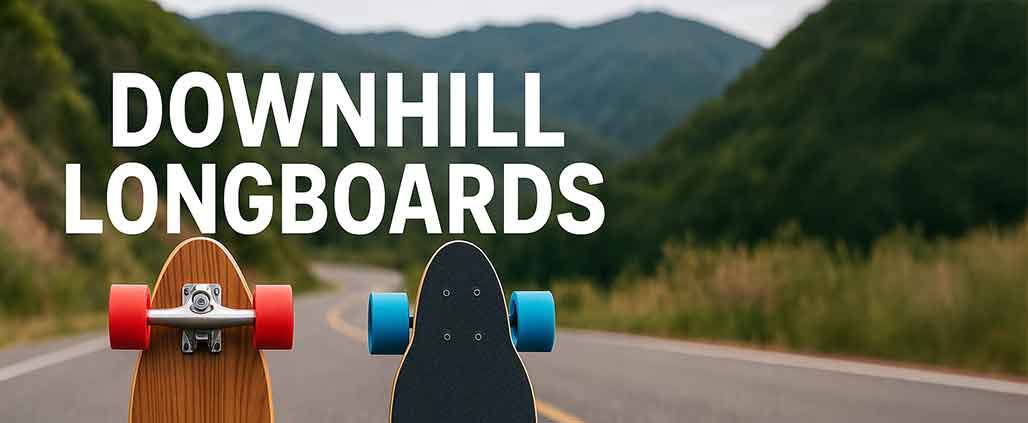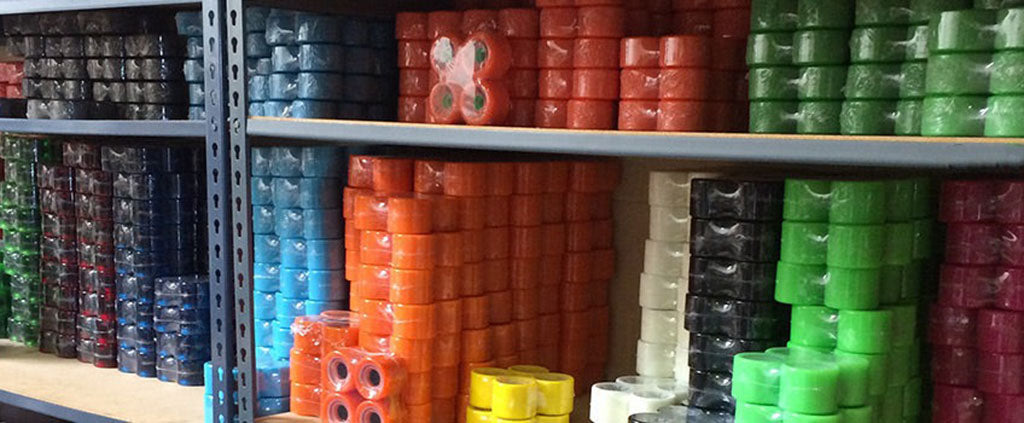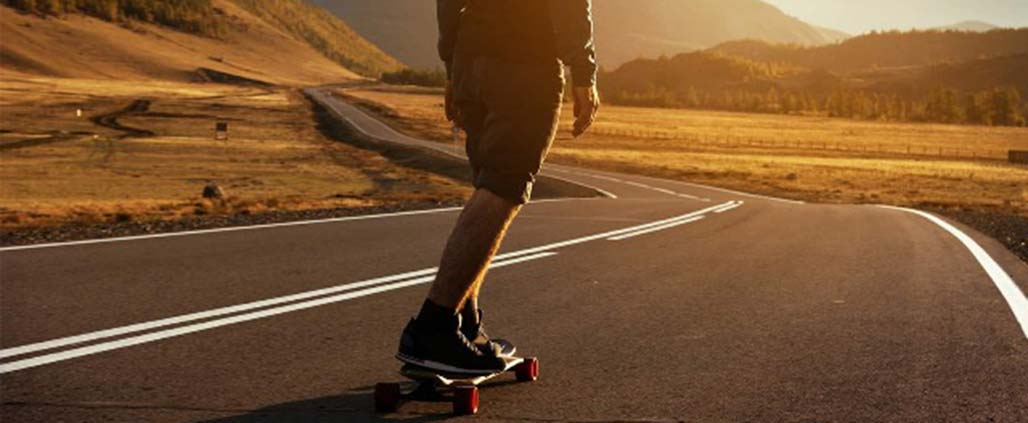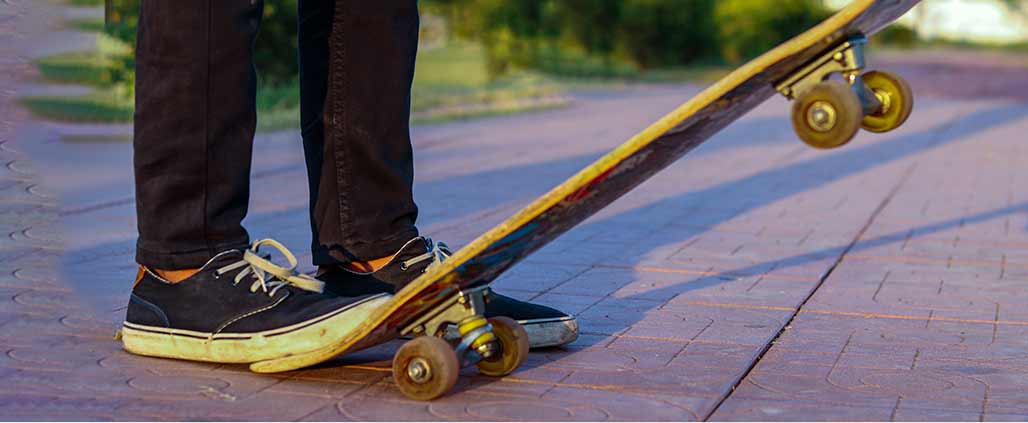
Downhill Longboards: Everything You Need to Know Before Buying
So you're thinking about getting into downhill longboarding? Smart choice. It's one of the most exhilarating ways to experience speed on four wheels, and I've been bombing hills since the early 2000s. Lemme walk you through everything you gotta know before dropping your cash on a setup that'll either make you feel like a god or send you tumbling down the asphalt. Yeah, equipment choices matter that much in this game.
Key Takeaways
- Drop-through decks are best for beginners (more stable at speed)
- Top-mount decks offer better control for advanced riders
- Essential safety gear includes helmets and slide gloves
- Reverse kingpin trucks with 40-45° baseplate angles provide optimal stability
- Stiff decks with minimal flex are crucial for downhill performance
- Wheel selection affects both speed and grip (critical trade-off)
What Makes a Downhill Longboard Different?
Downhill longboarding ain't like your casual cruiser setup. When you're hitting 30, 40, even 70 mph down winding roads, every component matters. The wrong setup can literally mean the difference between carving a perfect line and eating pavement.
Deck Types: Finding Your Perfect Match
For beginners, Drop-Through Longboards are your best friend. The trucks mount through the deck, lowering your center of gravity. This makes the board way more stable at high speeds and helps "the fear of high speeds melt away" as you gain confidence.
I remember my first drop-through - a Punked Drop Through with a beach graphic. It wasn't anything fancy, but it gave me the stability I needed when learning to handle speed.
Advanced riders often prefer Top-Mount Longboards. While they might feel sketchy at first, most pro downhill racers agree "the quickest way down a winding road is on a top-mount deck." Why? You get better leverage over your trucks, which translates to more precise control in corners.
There's also Drop-Mount Decks (or drop-down), which keep a low platform but with top-mounted trucks. These hybrid designs are often "the most beginner-friendly shape and would be the easiest to learn on" since they combine stability with some performance benefits.
Critical Deck Features
When shopping for a downhill board, pay attention to these specs:
- Stiffness: A stiff deck "ensures stability at speed and effective feedback from your trucks." Flex is your enemy in downhill - it creates speed wobbles at higher velocities.
- Length: Aim for boards in the 32-43" range for downhill. Too short and you're unstable, too long and you lose maneuverability.
- Concave: Deep concave gives you better control by locking your feet in place during slides and turns.
Truck Setup: The Heart of Performance
Trucks are arguably the most important component for downhill. They translate your body movements into direction changes, and their setup dramatically affects how the board responds at speed.
Reverse Kingpin Trucks (RKP)
For serious downhill, you want Reverse Kingpin Trucks with baseplate angles around 40-45°. This "should give you the best balance between stability and speed." Higher angles (50°+) feel twitchy at speed, while lower angles (less than 40°) can feel dead and unresponsive.
Top downhill truck brands include:
- Paris Trucks - "best all-around" with solid performance across riding styles
- Caliber Trucks - "good for downhill beginners and freeride"
- Bear Trucks - A Canadian brand with solid downhill credentials
Bushing Selection
The rubber bushings inside your trucks dramatically affect performance. For downhill, "We primarily use double barrel bushings. These give the best balance between lean and turn."
Bushing hardness should match your weight - heavier riders need harder bushings. Too soft, and you'll get speed wobbles. Too hard, and turning becomes difficult. Most manufacturers provide weight charts to help you choose.
Wheels: The Speed vs. Grip Trade-off
Longboard Wheels for downhill present an interesting dilemma:
- Some wheels roll very fast but sacrifice cornering grip
- Others provide exceptional grip but with increased rolling resistance
- The optimal choice depends on riding style and course characteristics
For beginners, err on the side of grip. 70mm wheels with a square lip profile and softer durometer (78-83a) provide predictable grip while still allowing controlled slides when needed.
As you progress, you might experiment with 75mm wheels for straighter courses or faster desired speeds.
Essential Safety Gear
Let's get real - downhill is dangerous. Two pieces of equipment are absolutely non-negotiable:
-
Helmet: "A half-shell helmet is an optimal choice because it protects the entire circumference of your head." Many downhillers opt for full-face helmets at higher speeds.
-
Slide Gloves: These allow you to put your hands on the ground during slides and falls. Without them, your hands will be shredded in a crash.
Additional protection I'd recommend includes knee pads, elbow pads, and padded shorts. Trust me, road rash sucks, and pavement at 40mph ain't forgiving.
Mastering the Fundamentals
Before you even think about bombing serious hills, you gotta master the basics on mellow slopes.
Braking Techniques
It's "imperative that you master stopping and carving on your longboard" before attempting serious downhill runs. Start with foot braking - dragging your foot on the ground to reduce speed. Practice on smaller hills to build the leg strength necessary for longer descents.
As you progress, learn sliding techniques like the Coleman slide (pendy). These allow you to scrub speed without putting your foot down.
Carving for Control
Developing proper carving technique - making rhythmic "S" turns down the hill - is essential for speed control and line selection. Practice on smaller hills helps you develop "a good rhythm, and your carves will become instinctive."
The Tuck Position
The aerodynamic tuck is crucial for maximizing downhill speed. "The tuck is an aerodynamic position to help you go as fast as possible," affecting both acceleration and top speed. Watch videos of downhill racers to study proper form - bent front knee, rear leg extended, chest close to front thigh, arms behind back.
Competitive Downhill
If you get the bug bad enough, you might find yourself at the starting line of a race someday. Success depends on more than just skill:
Physical Factors
Body type significantly impacts downhill performance:
- "Basically, the heavier you are, the faster you go downhill."
- Heavier riders have advantages on courses with long straightaways
- Lighter riders often excel on technical courses with numerous corners, as they "don't have to slow down as much for a corner and can carry more speed through it."
Race Strategy
You can't simply push out first and expect to win. Drafting (riding closely behind another skater) creates passing opportunities by reducing wind resistance. Understanding course characteristics allows you to plan where to conserve and where to expend energy.
Best Downhill Longboards for Different Skill Levels
For Beginners
- Punked Drop Through Longboards - Affordable and stable
- DB Longboards Paradigm - Quality construction with beginner-friendly geometry
- Yocaher Drop Through Longboards - Budget-friendly options with decent components
For Intermediate Riders
- Rayne Demonseed - Double drop design with quality construction
- Prism Hindsight - Versatile deck that works for both freeride and downhill
- Goldcoast Classic Sport - Well-balanced drop-through with quality components
For Advanced Riders
- Rocket Downhill Decks - Premium construction and refined geometry
- Omen Giza - Performance-oriented top-mount with aggressive concave
- Landyachtz Boards - Canadian-made quality with various downhill options
Conclusion
Downhill longboarding combines technical skill, equipment optimization, and physical courage into one exhilarating package. Start with the right gear - particularly a drop-through or drop-mount deck if you're new - and prioritize safety equipment.
As your skills progress, experiment with different setups to find what matches your riding style. Whether you're in it for recreation or competition, the discipline offers a unique blend of technical challenge and pure adrenaline that keeps riders coming back for more.
Remember - gear matters, but practice matters more. Start small, build skills progressively, and you'll be carving down mountain roads before ya know it.
FAQ
Q: What's the difference between downhill and freeride longboarding? A: Downhill focuses primarily on maximum speed and racing, with emphasis on tuck position and maintaining grip through corners. Freeride incorporates more sliding and technical maneuvers, often at slightly lower speeds. Many riders enjoy both disciplines with similar but slightly specialized equipment.
Q: How much should I expect to spend on a decent downhill setup? A: For a quality beginner setup, budget around $200-250. This includes deck, trucks, wheels, bearings and hardware. More advanced setups can range from $300-500+, with high-end race setups potentially exceeding $700.
Q: Are downhill longboards good for beginners to skateboarding in general? A: Not ideally. If you've never skateboarded before, start with a cruiser or drop-through longboard for casual riding before attempting downhill. Master basic pushing, foot braking, and carving on flat ground and gentle slopes first.
Q: What hills should I start on as a beginner? A: Begin on gentle slopes with clear visibility and minimal traffic. Ideal starter hills have a consistent grade (not too steep), good pavement, clear runout areas, and few or no intersections. Always scout hills thoroughly before riding them.
Q: How do I prevent speed wobbles? A: Speed wobbles come from improper weight distribution, loose trucks, or inadequate technique. Prevent them by: keeping weight on your front foot (60/40 distribution), using appropriate bushing durometer for your weight, maintaining a proper tuck position, and gradually building speed tolerance through practice.
Q: Can I use any longboard for downhill? A: While you technically can use most longboards for mild hills, proper downhill longboards have specific features for safety and control at speed: stiff decks, stable truck geometry, and wheels designed for predictable grip. Using inappropriate gear at high speeds significantly increases crash risk.
Q: How do I know when I'm ready for steeper hills? A: You're ready for progression when you can confidently: foot brake at any speed on your current hills, carve smoothly to control speed, slide to stop if needed, and maintain proper form throughout the entire run without feeling sketchy or losing control.





